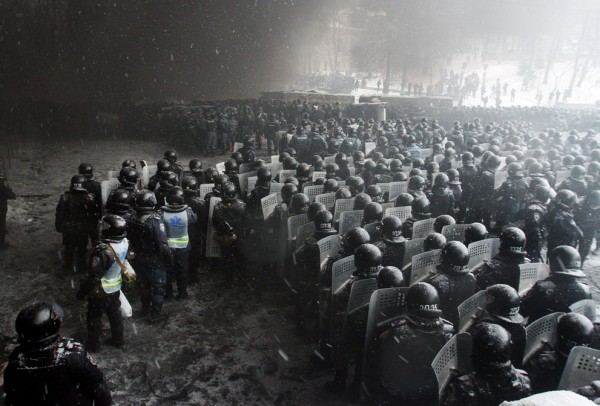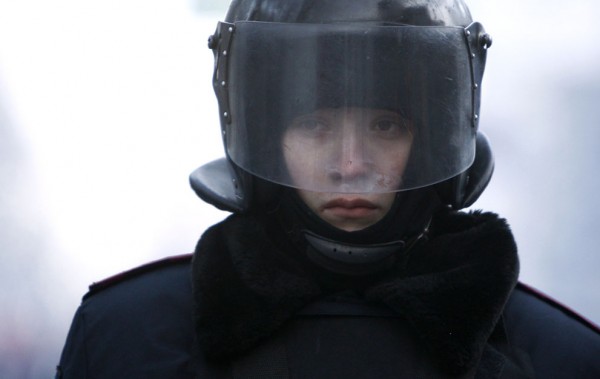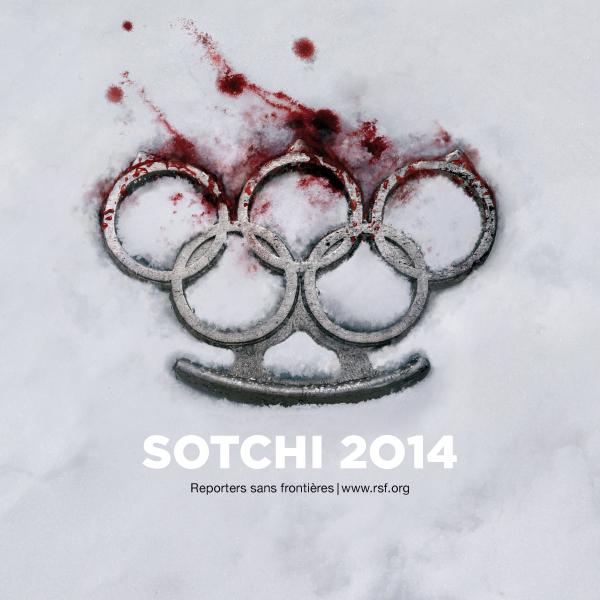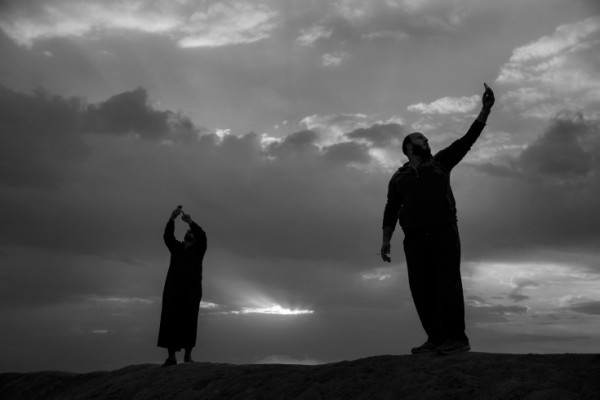Notes
The Face of the Future in Kiev’s Battle for Middle Earth
If photography is capable of documenting the changing face of battle, we should take a good look at what is happening in Kiev.
Doesn’t it look like a scene from Middle Earth? Faceless legions with body armor and shields are massed in the winter half-light. They stand in crude uniformity, waiting to be unleashed against another peasant revolt. They will serve their masters obediently and show no mercy to the weak. Such was Tolkien’s reconstruction of medieval warfare, and for all his love of the period, he had few illusions about its brutality.
I’ve argued before that conflict photography is accumulating evidence of a of disturbing change in the political and cultural dimensions of modern violence: that it is becoming less modern.
Some might think that would be good news. Those with romantic (but incorrect) ideas about primitive societies might think that the kill rates would drop as warfare became more ritualized. Actually, modern warfare is proportionately less murderous, although that can’t mean much to those in the wrong place at the wrong time. Others might hope that war was becoming more localized, with less likelihood of a world war or global nuclear annihilation. Violence is quite localized at present, but the localities are multiplying, vast economies and whole societies are being distorted or drained by militarization, and global conflagration still can’t be ruled out. No one would think that weapons were becoming less lethal, and for good reason, but that is beside the point of how warfare may create or express cultural decline.
The similarities with medieval military gear may be merely superficial, but they do correspond with other changes in the same direction, including the destruction of the middle class, corruption of public institutions, comprehensive securitization while the state’s monopoly of violence gives way to private armies, and–not least–millions of people being treated as if they had no value beyond their economic utility to those who had consolidated enough power to make or skim the profits from the the labor of the land. And in that world, if there isn’t enough to live on, you always can join the military.
The caption said, “A riot policeman stands at his position near the site of clashes with anti-government protesters in Kiev.” True enough, and it misses just about everything in the photograph. He’s not a cop, he’s a kid. And he’s miserable: whether from cold or fear or boredom or regret, we don’t know and it doesn’t matter. What does matter is that he is no Orc, but rather a human being who, despite being wrapped in the trappings of state power, bears already too many signs of deprivation, suffering, and a blighted future.
We don’t know the individual, of course; we are being shown a type. He could in fact be a young fascist in the making, even a sociopath who will go far in his chosen profession. Or he could be an ordinary guy enduring his compulsory service before he goes to school and becomes a valued employee and model citizen. Time will tell, but this photograph is not about the individual; he is instead being enlisted into a work of art that is trying to tell us something about collective life. What he provides for that work is his face. More to the point, the contrast between a real, human face and that ugly uniform. A uniform that is both animal and mechanical and wholly representative of how impersonal forces can encase and destroy a human being. He may be protected from the protestors–who are not gentle, either—but he is at the mercy of a dark dominion. A darkness that is spreading over the earth.
— Robert Hariman
(cross-posted from No Caption Needed.)
(photos: Anatolii Boiko/AFP-Getty Images and David Mdzinarishvili/Reuters)




Reactions
Comments Powered by Disqus